Machineries Of Joy Read online
Page 2
In slit-scan, a camera is mounted at the end of a long track, at the opposite end of which a piece of flat artwork is masked to reveal only a narrow horizontal slit. As the camera moves forward very slowly, a computer coordinates the motion of the slit up or down on the artwork. The result is a drawn-out image of the artwork, stretched in perspective by the camera's approach.
Computers are also responsible for the many forms of motion-control used to photograph space battles at Lucasfilm and elsewhere. Signals from a camera mount are fed into a computer, which memorizes the camera positions and can then control the camera for repeated passes. Different models, mattes and other special effects elements can be added with great precision.
Computers are even involved in stop-motion puppet animation at Industrial Light and Magic. The "Go-Motion" computerized system was used in DRAGONSLAYER to memorize the motions of an armatured miniature dragon as it was manually "walked through" its sequences.
All these elaborations--from slit-scan to Go-Motion puppet animation--are likely to become passe, before the end of the century. Whatever the risks, Digital Productions is obviously where the field is moving. But computers have one major hurdle to leap before they dominate. Character animation--whether it be the fluid motions of a Disney cel-animated deer, or a human being--is still very difficult for computers. Computers are happiest when dealing with shapes defined by simple mathematics--planes in perspective, spheres, cones, polygons and polyhedrons. Humans (not to mention Bambi or dragons) are not composed of these objects, at least not at first glance. Living characters are lumpy, bumpy and in constant motion--all parts of them. Muscles shift beneath skin and skeletal angles change. Facial expression is a nightmare of complexity, with hundreds of muscles providing a bewildering variety of shapes--all of them familiar to the viewer, and therefore difficult to fake convincingly.
For the artist, years of study are required to convincingly replicate human and animal shapes. The human mind is enormously more complicated than any modern computer, with millions of "algorithms" all smoothly blending in unconscious processes. How can a computer hope to match the work of a skilled cartoon animator, much less the reality of a human being?
Tim Heidmann, at R&B EFX in Glendale, believes character animation is the stumbling block of computer graphics. "When you think of all the expertise required to get a Disney- type character on film--including the distortion of reality, stretching characters to add life, exaggerating expressions--the problem seems insurmountable." Heidmann does computer graphics for R&B EFX using a much smaller Hewlett-Packard business computer. The HP manipulates wireframe images which are then photographed and enhanced by hand in R&B's own small animation studio. The entire system cost under $25,000, "What computers do best," he explains, "is what human animators do with the most difficulty--changing perspective, drawing geometric shapes. And what humans do best is most difficult for computers--especially a small system like ours: coloring, shading, characters." R&B combines the two with ingenuity instead of massive number- crunching.
Digital Productions is hard at work using both ingenuity and brute computing power to overcome the difficulties of animating characters in a computer. Most of this work is under tight wraps of security, but it appears they are building up human and human-like figures by creating "intelligent shapes" which will mimic muscles on fixed skeletal frames. These "intelligent shapes" will be programmed to interact with other shapes--other muscles--around a skeleton, within the constraints of skin.
Motion studies of animals and humans are programmed into their machines to give them parameters within which to work. Ron Cobb explains: "A computer doesn't know where to stop. If you have a character's arm swinging, the arm in the machine isn't real. It doesn't have an elbow or a shoulder to stop it. It just keeps swinging in a circle until you tell it what the limits are. Then it has the limits in memory, but you have to be very specific, very careful."
The computer cannot intuit anything. It is literal. Everything must be described in detail. Consequently, the computing capacity and time required to control these figures will be enormous--at first. But the cost of the early stages in labor and money can be compared to research and development costs in any industry. The initial outlay is always greater than the cost of later work.
One small hint of the coming revolution is provided by the locations of two major companies relying on computer graphics. Cranston-Csuri, founded by pioneer computer artist Charles A. Csuri, is located in Columbus, Ohio. Computer Creations takes pride in being based in South Bend, Indiana--far from the advertising capitols of New York and Los Angeles. Electronics can deliver messages and products around the world; in the future, location will be less and less important.
Size will also become less important. With computers, a commercial studio can begin operations with only a handful of creative people. Pacific Data Images, in Sunnyvale, California, has only four employees, yet has already landed major advertising and promotional contracts. With initial costs of less than a million dollars, entrepreneurs like PDI's Carl Rosendahl are already taking advantage of the built-in flexibility of the computer. Costs are dropping, and software is improving, albeit more slowly than hardware. Within ten years, the big advertising companies will be surrounded by smaller, tougher firms with equal capabilities. The bottom line will then be not money, but creativity. There is no lack of creativity. The computer images and motion pictures produced by artists around the world are dizzying in variety and quantity. California's David Em is well known for his architectural fantasies and abstractions. Paul Allen Newell has animated M.C. Escher-inspired tesselated designs that transform with enchanting smoothness and precision.
Nancy Burson of New York (profiled in OMNI, "The Arts," June 1983) uses computers to digitally combine photographic images of people and animals. She was responsible for the portrait of Big Brother commissioned for CBS's tribute to Orwell's 1984. By digitizing and melding the portraits of the twentieth century's worst tyrants, she came up with a hauntingly familiar, somehow benevolent and yet very unsettling hybrid. Much more charming is her mix of woman and cat.
Em, Burson and Newell highlight the successes and problems of presenting computer graphics on the printed page. Em's and Burson's images are static, suitable for magazine reproduction, but the charm of Newell's work lies in motion.
Even more difficult to convey is the wonder of a live computer art performance, where performer and audience are one. Ed Tannenbaum of Raster Master in San Francisco has installed a performance art center in his city's public-access science center, Exploratorium. A video camera photographs people in a room as they move about and then feeds their images to a computer. The result is projected in real-time (that is, live) on a large screen, allowing infinite varieties of human-machine artwork. Children can dance and paint with their bodies, becoming their own kaleidoscopes.
Educators inevitably become more involved with computer graphics as classroom computers proliferate. Simple graphics programs can teach even very young children how to work (and play) with computers. Today's youngsters will find computers and computer art a part of their lives. This is where the revolution truly becomes powerful.
In one or two decades, at the present rate of progress, computers cheap enough for home use will be capable of graphics even more sophisticated than those being produced by today's major studios. Graphics buffs will be creating, trading and selling programs to generate different kinds of images--including images of realistic characters.
Eventually, perhaps by the end of this century, a kind of visual typewriter will be possible. Any scene the programmer/artist/writer can imagine, will be brought to life using computer animation. As software and hardware advance and become cheaper, and as information and image networks expand, virtually anybody can become a Cecil B. De Mille. The major requirements will be time and talent--not money.
The greatest handicap to cinema at the moment is the dominance of accounting over creativity. Faced with budgets of tens of millions of dol
lars, studio executives are justifiably concerned that their products should appeal to large numbers of people. The result is often pabulum. Primary creativity is endlessly ignored or second-guessed.
Commercial television networks are even more handicapped; to satisfy advertisers, incredible numbers of people must tune in to their programs. Few artists or writers have ever made anything worthwhile by pandering to the lowest common denominator, yet this is the current state of most of network television.
The printed word allows more freedom. A pencil and a piece of paper are all that is required for expression in print. The production of a book is measured in tens of thousands of dollars for an average press run, not millions. Publishing--for the moment--still allows a great many writers to create personal works. A writer can establish a reputation with only a few hundred or a few thousand steady readers.
Yet only ten to twenty percent of Americans regularly read books. Newspapers and magazines fare better--but less than half of all Americans receive any of their information from the printed word. What we have is a colossal failure of a communications medium--print--to reach the masses.
For many people, print is difficult to assimilate. It has many uses and advantages, but often it cannot convey information as quickly and efficiently as other media.
The dilemma is clear. Print offers diversity and individual expression--as well as the active participation of the reader, in imagining and fleshing out what the words convey--but cannot reach as many people as television or motion pictures.
Television and motion pictures appeal to the masses, but more often than not spoon-feed pabulum to a barely conscious viewer.
By combining both print and vision, computers will break the money monopoly and allow many more people to work with "pictorial narratives," a catch-all phrase for the multitude of art forms which will inevitably develop.
Robert Abel sees a future society with individuals becoming more and more isolated, physically, as the electronics revolution allows them to work at home. With increasingly sophisticated entertainment forms, there will be less need to leave home for recreation. With more leisure time, the public will demand more entertainment. And with more artists able to produce complicated pictorial narratives, the demand could well be met with an explosion of creativity--if the audience isn't already conditioned to textureless drivel. If it isn't too late even now...
Take a deep breath.
We're going to enter a possible future, and it will take some effort to get used to it.
* * *
You're on a street. A woman approaches you. She appears to be wearing a jungle. You stare in amazement as she passes; to a distance of about six inches, all around her, you can see gnarled trees, vines and creepers, exotic birds, even a leopard lying in wait.
She walks along a wall and the building suddenly smiles at her--the entire wall one massive pair of lips in three dimensions. "Good morning, Miss Andrews," it says. "How may we serve you today? Shopping for apparel, or just out for a stroll?" AdWalls are formal and slightly stodgy by design. Virtually everyone is known, on sight, by ad companies who use computers to target not just groups of consumers but individuals.
The woman pays no attention and continues on. The smile disintegrates into a flight of wildly colored butterflies as you approach.
"Distinguished sir," the AdWall says. Butterflies flitter around you. "I don't have your name in memory at this moment. How may Freepic serve you today?"
You mumble something about wanting to find a computer store.
"Chips'n'discs, the city's oldest computer store, lies but two blocks away." A map appears in front of your face, then transforms into a speeded-up visual tour. You see yourself walking two blocks south, turning left, and entering the store. The image ends with a large-scale projection of the storefront. Symbols conveying hours of business, product lines available, and even clerk's faces are overlaid on each side of the map.
You make your way through parti-robed citizens and find the store. Inside, you marvel at the systems available. There are computers for computing, and for just about anything else imaginable. You can rent information networks, even gain access to a world-wide library system for a low monthly fee. ("Less than one percent of the average household income!" a display enthuses. There are two billion subscribers.)
Your domicile can be turned into any environment you wish, complete with sounds and smells. You can even create your own environment, using the Apple 89 Worldmaker.
"Occupation?" the clerk asks. The clerk grins and fades to transparency, then opacifies again, as required by law in the first few minutes of service. You realize you are being served by a very realistic hologram.
"Writer," you say.
"Oh, then you need a minezeye." It takes you a few minutes to realize the clerk means "Mind's Eye." The unit is quite small, the size of a cigarette case, and comes complete with plugs to hook directly into the cerebral cortex.
"The Mind's Eye is a Hair Trigger unit, taking instruction in basic Brainwave, spoken language or even Touchcode, rather like typing. If you wish, it has a translator which can turn a videotext into a visual experience. Plug the Mind's Eye into a Page Turner and you can interactively turn your favorite classic into a motion picture, just a you visualize it; you coordinate the action through the cerebral cortex plugs. Some training required," the clerk informs you cheerfully. Videotext combines visual and aural information with high-density symbols--symbols which both inform and trigger intellectual and emotional cues in the adept viewer. Some videotexts compress a hundred flashing signals within a few seconds' time. The symbols are distant relatives of Egyptian heiroglyphs--and modern road signs. Some are based on the logos of famous businesses. Some are as stylish as Japanese calligraphy.
Realtime units will soon be available. If you think it takes too long to imagine a scene, Realtime can supplement your brainwaves. If a jungle is required, Realtime has seventy different jungles in memory, and soon will have cable connections with real jungles, which can be digitized and reshaped at will.
All computers in Chips'n'discs are, of course, Child Easy. In fact, the 1-Thru-5 unit is designed to be used by an infant. It comes complete with Sensual Crib and access to the Sesame Net.
If you're a fiction writer, you can peddle your creation on the Lie Wire (stet!). If you're a philosopher, your works can find their audience (for a fee, of course) on the Mindbender cable. Historians frequently sell to the Pasttime Cable.
On any of these networks, you can start out on the Low Rung and gradually, through jury selection or User Acceptance (the ratings, that is) move up step by step to the very height of success. A single work might reach as many people as, say, the Britannica Visual.
Peripherals include MovieLife, a chip which can be dropped into your home computer to turn any 20th century film into a living experience for you and your family. If you'd prefer to see Humphrey Bogart star in THE MAN WHO WOULD BE KING, instead of Michael Caine, that can be arranged. If you'd like to see an enhanced color version of the original KING KONG, with synthesized stereo sound, MovieLife will oblige. Live actors are still in great demand. They frequently license their images for computer generation, making a substantial second income--but virtually everyone acknowledges that a real actor is better than a simulation. Some actors have ruined promising careers by selling rights to less reputable retailers, who place their personas in all sorts of compromising products.
But be warned--if you get too involved in all this, and happen to Drop Out--leave the real world and zip along the underground nets, where all sorts of unsavory stimulations are available--the Bug Police are tapping the wires every day. There are many legitimate adult services, such as FantaFem and Woman of Your Dreams, but many more balance precariously on the borders of the law, or fall completely offsides. "Bookstores?" The clerk responds to your question with some surprise. "We've heard of a few shops catering to the collector's market--and of course, there's always the Winston Smith Society. It meets once a month to
trade crumbling paperbacks."
You look around the shop, at the profusion of systems that serve more to supplement or replace creativity than enhance it. "Don't you have anything for someone who just wants to tell his own story, with his own images?" you ask, frowning.
"Sir," the clerk says indignantly, "that's where this all begins. Not everyone is as privileged as you must be, however."
You are reminded of electronic music instruments, decades in the past. Some became so elaborate that you barely had to touch a key to produce a tune. Distasteful to the concert pianist, perhaps, but a great deal of fun for the dabbler.
"Come with me," the clerk says, taking you in his ghostly hand. "Let me show you some basic models. For the person who wants to create, rather than simply consume."
You are led into a simply and tastefully furnished room. A boy and girl, no older than ten, are sitting before an extensive keyboard. Colors and vague shapes flicker in a cleared area beyond the machine. "Did we get all the numbers right this time?" the girl asks. "We want it to be as accurate as possible."
"They're right," the boy assures her.
"Let's see it, then."
The boy pushes a display key.
In the cleared area, a tyrannosaurus rex appears in horrible, fascinating detail, tail swishing back and forth, walking on its six clawed toes. It opens its mouth and emits a curious, bird-like squawk. "Oh, they didn't sound like that," the girl says, shaking her head vigorously.
"How do you know?" the boy asks.
"Let's make it roar."
With a few nimble keyboard touches, they make the beast change its tune and roar.
"Don't you just love dinosaurs?" the girl asks, clapping her hands.
Your fingers twitch. Where was this kind of machine when you were a child? You step forward and politely ask, "Here. May I play with that? "I've always fancied sea monsters, myself..."

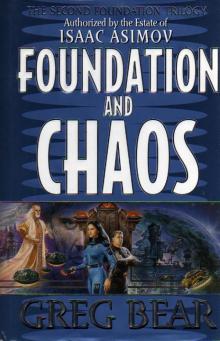 Foundation and Chaos
Foundation and Chaos Halo: Silentium
Halo: Silentium Blood Music
Blood Music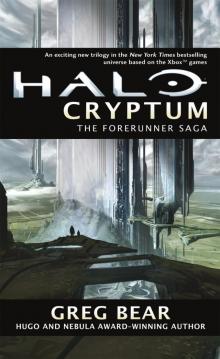 Halo: Cryptum
Halo: Cryptum Halo: Primordium
Halo: Primordium The Unfinished Land
The Unfinished Land Hardfought
Hardfought Hull Zero Three
Hull Zero Three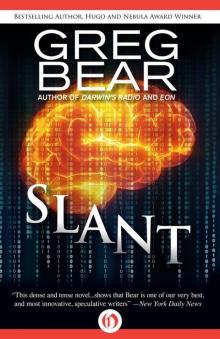 Slant
Slant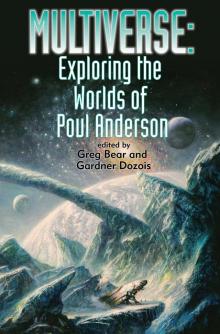 Multiverse: Exploring the Worlds of Poul Anderson
Multiverse: Exploring the Worlds of Poul Anderson Take Back the Sky
Take Back the Sky Nebula Awards Showcase 2015
Nebula Awards Showcase 2015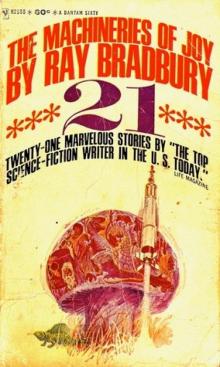 Machineries Of Joy
Machineries Of Joy A Martian Ricorso
A Martian Ricorso Eternity
Eternity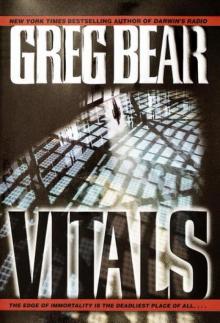 Vitals
Vitals The Infinity Concerto
The Infinity Concerto Beyond the Farthest Suns
Beyond the Farthest Suns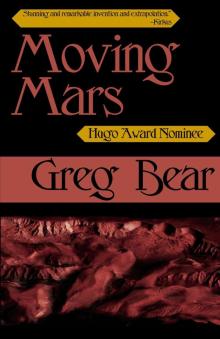 Moving Mars
Moving Mars Quantico
Quantico Darwin's Radio
Darwin's Radio Beyond Heaven's River
Beyond Heaven's River Star Wars - Rogue Planet
Star Wars - Rogue Planet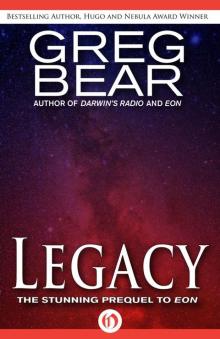 Legacy (Eon, 1)
Legacy (Eon, 1) War Dogs: Ares Rising
War Dogs: Ares Rising Sisters
Sisters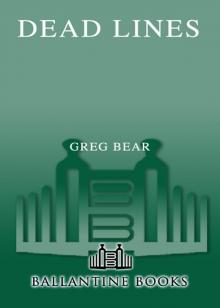 Dead Lines
Dead Lines Just Over the Horizon (The Complete Short Fiction of Greg Bear Book 1)
Just Over the Horizon (The Complete Short Fiction of Greg Bear Book 1) Eon (Eon, 2)
Eon (Eon, 2) Venging
Venging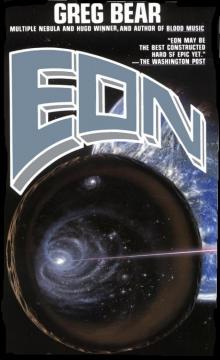 Eon
Eon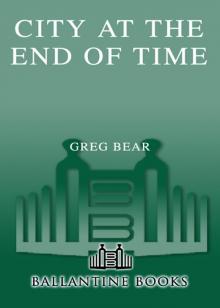 City at the End of Time
City at the End of Time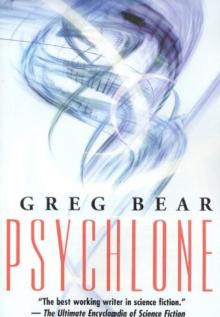 Psychlone
Psychlone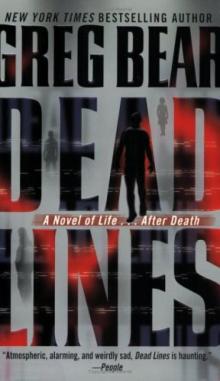 Dead Lines, A Novel of Life... After Death
Dead Lines, A Novel of Life... After Death Eternity (Eon, 3)
Eternity (Eon, 3) Cryptum
Cryptum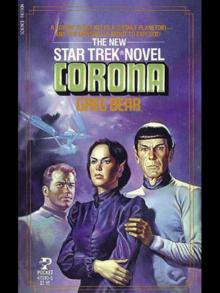 Corona
Corona Sleepside: The Collected Fantasies
Sleepside: The Collected Fantasies Women in Deep Time
Women in Deep Time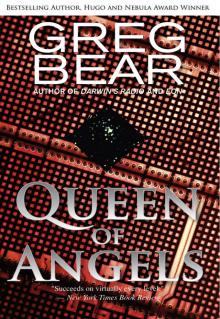 Queen of Angels
Queen of Angels Darwin's Children
Darwin's Children Dinosaur Summer
Dinosaur Summer The Forge of God tfog-1
The Forge of God tfog-1 Foundation and Chaos f-9
Foundation and Chaos f-9 Star Wars: Rogue Planet
Star Wars: Rogue Planet The Forge of God
The Forge of God Mariposa
Mariposa Halo: Cryptum: Book One of the Forerunner Saga
Halo: Cryptum: Book One of the Forerunner Saga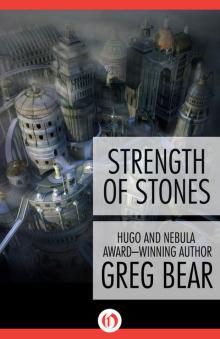 Strength of Stones
Strength of Stones Anvil of Stars
Anvil of Stars B00AQUQDQO EBOK
B00AQUQDQO EBOK Anvil of Stars tfog-2
Anvil of Stars tfog-2 Ares Rising 1: War Dogs
Ares Rising 1: War Dogs Rogue Planet (star wars)
Rogue Planet (star wars) The Machineries of Joy
The Machineries of Joy Far Thoughts and Pale Gods
Far Thoughts and Pale Gods Songs of Earth and Power Omnibus
Songs of Earth and Power Omnibus Killing Titan
Killing Titan Darwin's Radio d-1
Darwin's Radio d-1 Darwin's Children d-2
Darwin's Children d-2